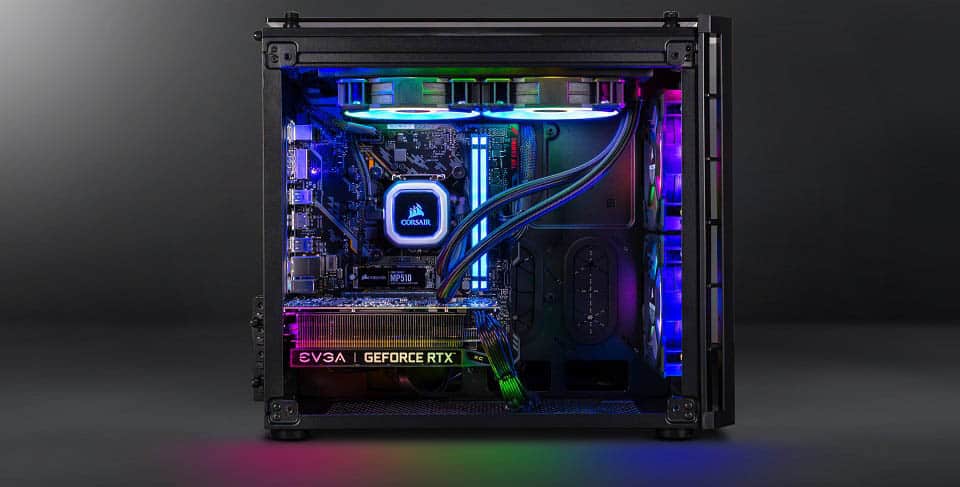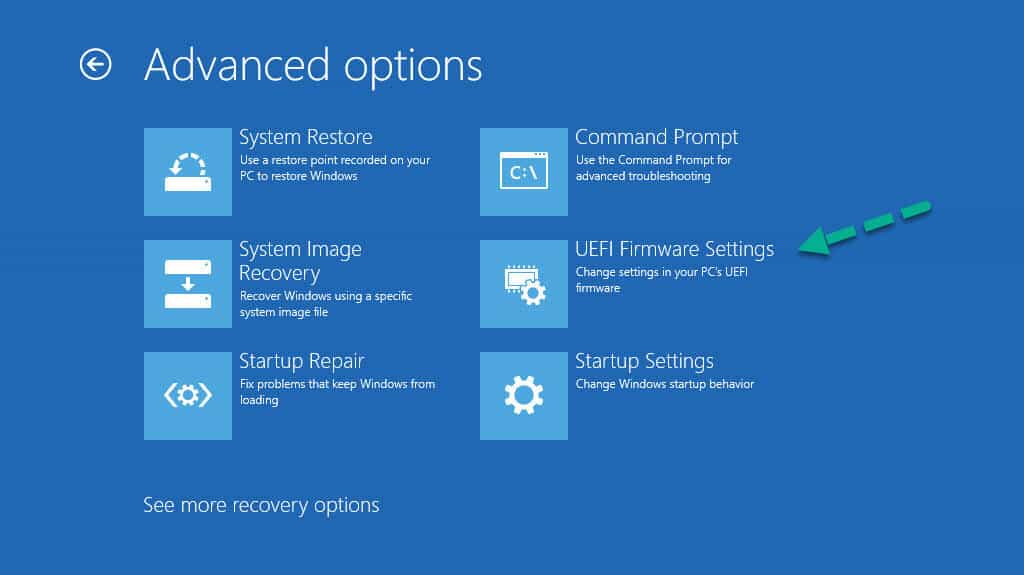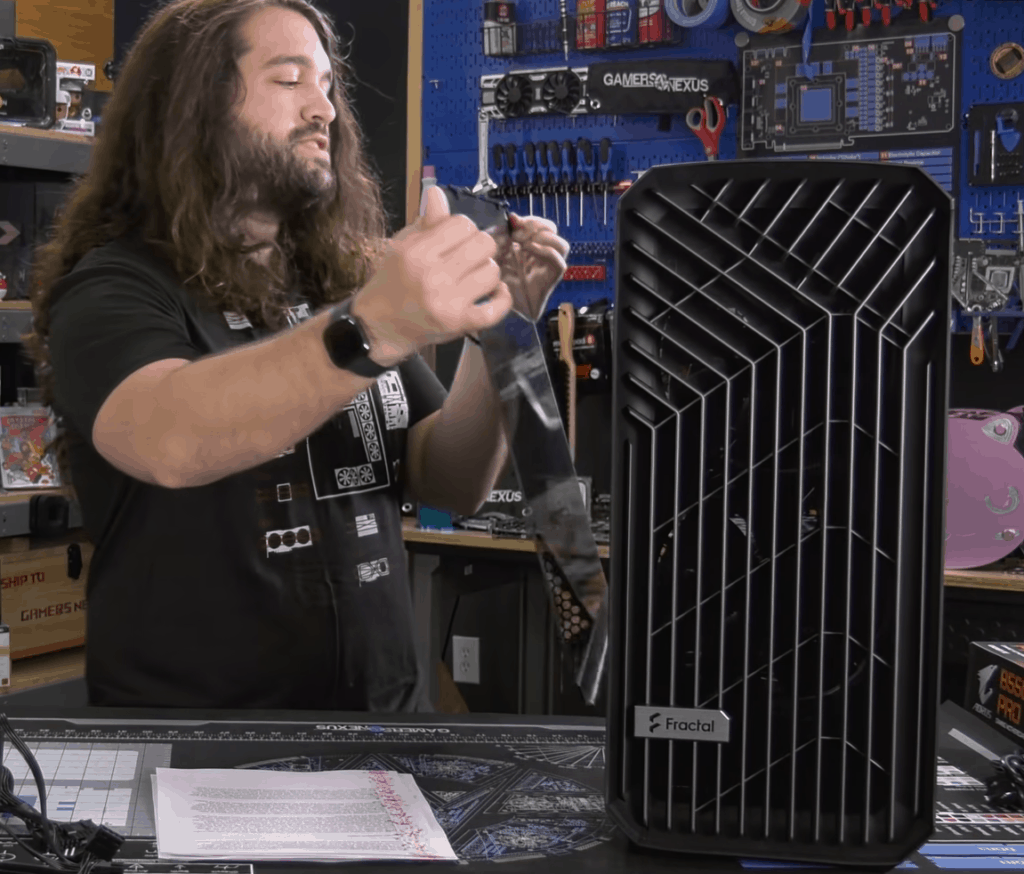3rd Monitor Not Displaying Randomly but Shows Up Again When Update Geforce Experience
Graphics card not detected? Nobody likes seeing an fault like this, specially if you aren't particularly well-versed in the details of hardware/software interaction. Don't worry, we're hither to help.
There are multiple possible reasons why your GPU isn't being detected and you might run across this error in diverse places, which just adds to the defoliation.
Let's get started!
GPU Not Detected In Windows

This trouble tin occur for a number of reasons, just it'due south very annoying when Windows automatically switches to the integrated GPU without you noticing it until you effort to play a game. Admittedly, this shouldn't happen very often, just information technology illustrates the point.
It can also happen for seemingly random reasons but the truth is that at that place'south an explanation for everything that happens on your PC and this is no exception. If y'all're playing a particularly graphically intensive game, your GPU could overheat and temporarily shut down. Sometimes, it doesn't come up back online and leaves you to stare at a black screen.
Fortunately, most modernistic CPUs (excluding Ryzen) come with an integrated graphics card. You can just switch your monitor to that output (which you can find on your motherboard's backplate, next to every other device input such as USB or PS/2). This way, you can troubleshoot the issue "from the within".
Enabling The Graphics Cards
At that point, your first step should be to go to Device Manager, find your GPU, and check if information technology's disabled. By clicking on your GPU, yous can as well cull 'Enable device' to prepare the problem.

Unfortunately, it'due south also possible that the Device Director won't even recognize your discrete GPU and volition instead but prove the properties of the integrated one. In that case, you'll need to check the BIOS/UEFI, merely we'll get to that later on.
Reinstall The GPU Driver
Sometimes the 'Graphics card not detected' error will occur upon the installation of new drivers if something goes incorrect. This could be a faulty driver or the new drivers' incompatibility with another component inside the PC; the options are too numerous to list.
Information technology might exist slightly unfair to claim that these errors are purely the error of the manufacturer. In many cases, the user makes a error past downloading the wrong commuter. If that happens, y'all should advisedly examine your GPU model and download the correct commuter afterward removing the mistakenly installed one.
The driver installation procedure for AMD is different from NVIDIA GPUs. Make sure you follow the right guide for driver uninstallation/installation.
Yet, every bit GPU engineering improves, manufacturers are commencement to adopt the method of having GPU management software installed automatically when a new card is inserted. This software then assumes responsibility for updating drivers.
This issue can also occur after a Windows update. The but solution here is to roll back the update and not install it until you lot are sure this problem no longer persists, by checking related forums and communities. You can also reinstall the update and meet if y'all get a positive result or need to roll back the update again.
BIOS/UEFI Issue And Prepare

UEFI is a successor to BIOS. However, due to the way BIOS was ingrained into our minds, it's withal widely used, although it now refers to UEFI rather than BIOS. We will refer to UEFI every bit BIOS to avoid whatsoever unnecessary confusion.
BIOS is in charge of your hardware and it should be the outset logical step in determining whether your GPU is disconnected. If your monitor doesn't detect the GPU and but shows a black screen, you can use the integrated GPU to access BIOS.
If yous're lucky, BIOS will detect your detached GPU and you tin simply enable information technology past changing its status from disabled. If your GPU is not detected at all and BIOS is showing its PCIe slot as empty, you have a bigger issue on your hands. Don't worry, for every PC problem, in that location's a solution.
Keep in mind, different motherboard manufacturers take different BIOS. The solution to this BIOS trouble will differ from one motherboard to another.
If you tin't seem to find an option to enable the GPU, refer to the motherboard's manual.
Earlier we resort to opening your case, it'south proficient to check if your BIOS is up to appointment. This is a tricky functioning, so information technology's best to advisedly follow the instructions from your motherboard's manufacturer. Even if it is up to engagement, getting your BIOS reflashed may fix the problem.
Opening Up The Case

Now we're getting downwardly and dingy. Opening the example can be a daunting task if you've never done information technology but don't fret, it's not that intricate.
Outset, you need to check that the power cables are properly plugged in the GPU. Even if they are, due to poor cable direction (no judgment here), it's possible that they are aptitude at an awkward bending, making them lose contact.
You should then check that your graphics card is properly positioned in the PCIe x16 lane. A good fashion to tell if it'due south seated properly is if the dorsum I/O panel is sitting snug on the back of the case. If it isn't and there'south a gap between the GPU's back console and the case, effort to gently utilise a flake of forcefulness on the GPU down towards the motherboard.
If the GPU wasn't seated properly before, you lot should be able to hear a "click" audio. This means the GPU is at present properly seated.
There's also the standard approach of turning information technology off and on again, which requires y'all to fully remove the GPU and and then put information technology back, though this is unlikely to solve the trouble.
You should also cheque if your PSU has enough power to handle your GPU's highest demands. Equally a full general dominion, the GPU's base power utilise is at roughly 40% of your PSU's ability capability, which allows the choice of information technology using 50% of the available ability when performing heavy-duty operations.
From here on, things only get grimmer.
If y'all still oasis't been able to detect the problem, your merely choice is to remove the GPU and test information technology on a different PC that y'all are sure works.
If the GPU works there, it'south likely that at that place is a problem with other hardware in your organisation. Information technology could be your motherboard, RAM, PSU, or even CPU.
The simplest solution here is to replace the cleaved hardware, and that'south a whole other headache.
If your GPU doesn't work in the other PC either, and then you can only hope your warranty covers whatever damage has occurred or you'll have to repair it at your own expense. Alternatively, it might exist time to look for a new graphics carte du jour.
Source: https://www.gpumag.com/graphics-card-not-detected-fix/

0 Response to "3rd Monitor Not Displaying Randomly but Shows Up Again When Update Geforce Experience"
Publicar un comentario